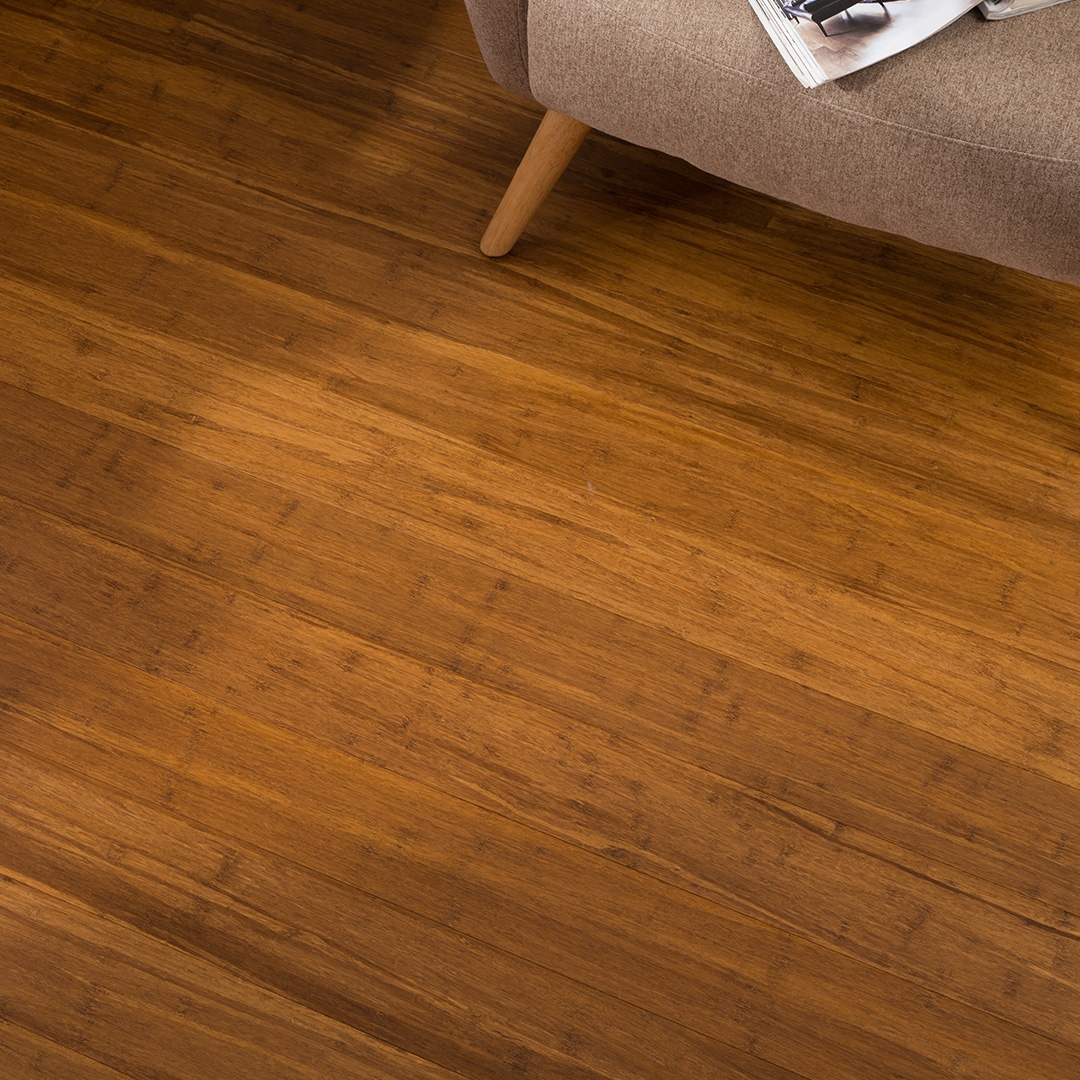As sustainability becomes a cornerstone of modern construction, the demand for low VOC (Volatile Organic Compounds) materials has grown rapidly. Among the rising stars in eco-friendly building materials, low VOC bamboo flooring stands out as a high-performance, renewable, and environmentally responsible option. For architects, builders, and homeowners aiming to achieve green building certifications like LEED, WELL, or BREEAM, properly manufactured bamboo flooring is more than a stylish choice—it’s a strategic one.

But not all bamboo flooring is created equal. The quality, performance, and environmental impact of bamboo floors depend heavily on the raw material selection, processing techniques, and precision manufacturing. Let’s take a closer look at how flooring made from 4–6-year-old bamboo, boiled and carbonized, pressed with over 1000 tons of force, and finished on German Homag machinery can deliver low VOC flooring that meets the highest green building standards.
Why VOCs Matter in Flooring
VOC emissions are harmful gases released from certain solids or liquids, including many conventional flooring products. These emissions can negatively affect indoor air quality and contribute to health problems like headaches, allergies, and respiratory issues. Many green building certifications require materials to meet strict VOC emission limits, following standards like California’s Section 01350 or GREENGUARD Gold.
Low VOC bamboo flooring helps reduce indoor air pollution, providing a safer living and working environment. But achieving truly low VOC emissions isn’t just about applying a low-emission coating—it starts at the source.
4–6-Year-Old Bamboo: The Prime Age for Flooring
The age of the bamboo culms used in flooring production plays a critical role in performance and sustainability. Bamboo harvested between 4 to 6 years of age offers the best balance of strength, density, and stability. Younger bamboo lacks the necessary lignification, making it weaker and more prone to deformation. Older bamboo, on the other hand, can become brittle and more susceptible to cracking during processing.
Furthermore, harvesting at the optimal age ensures the bamboo regenerates efficiently, preserving the ecological balance of bamboo forests. This age range also yields culms that are rich in natural starches and sugars, which are critical to manage during processing to prevent mold and insect issues.
Boiling: The Foundation of Clean, Durable Bamboo
Once harvested, the bamboo undergoes a boiling process to remove sugars, starches, and other organic compounds that attract pests and increase formaldehyde emissions. Boiling also helps to stabilize the bamboo’s moisture content and begins the sterilization process.
This step is critical for reducing VOCs. By eliminating organic residues that might otherwise decompose or off-gas over time, boiling helps ensure the finished product maintains a low-emission profile. It also improves the bamboo’s resistance to mold and mildew, especially important in humid environments.
Carbonization: Aesthetic and Structural Enhancement
Carbonization is a heat treatment process that darkens the bamboo naturally by caramelizing the sugars within the fibers. This process not only gives bamboo flooring its rich, warm tones without the need for chemical stains, but also helps to reduce VOCs further.
During carbonization, additional volatile compounds are driven out of the bamboo, effectively purifying the material before it’s formed into flooring. When combined with boiling, carbonization results in a cleaner, more stable raw material ready for pressing and precision machining.
1000 Tons of Pressure: The Key to Density and Durability
Durability is another factor that green building standards consider, especially under the category of material longevity. Bamboo flooring made using hydraulic presses with over 1000 tons of pressure achieves remarkable hardness and density. This high-pressure compression transforms the bamboo into strand woven boards with a Janka hardness rating that surpasses traditional hardwoods like oak or maple.
This level of density doesn't just improve scratch and dent resistance—it also increases the dimensional stability of the floor, reducing the need for replacements or repairs over time. A longer-lasting floor means fewer materials are consumed in the building’s lifecycle, aligning with sustainability goals and reducing overall environmental impact.
German Homag Machinery: Precision Engineering for Low Emissions
The final stage of the manufacturing process is finishing the pressed bamboo into tongue-and-groove, click-lock, or other flooring profiles. Here, the equipment used can make a significant difference in both quality and emissions.
By utilizing German-imported Homag machines, manufacturers achieve superior precision in milling and finishing. Tight tolerances reduce the need for excessive adhesives or fillers—two common sources of VOCs in flooring. Homag equipment also allows for uniform application of low-emission coatings and finishes, ensuring consistent quality across every plank.
Additionally, the precision of these machines minimizes waste during production, another important factor when considering a product’s environmental footprint.
Earning Green Building Points with Low VOC Bamboo Flooring
Low VOC bamboo flooring, when made with the methods described above, contributes to multiple green building certification credits, including:
LEED Indoor Environmental Quality (EQ) Credit: Low-Emitting Materials
WELL Building Standard: Air Quality and Materials Transparency
BREEAM Health and Wellbeing: Emissions from Building Products
By sourcing flooring from manufacturers that follow best practices—selecting mature bamboo, boiling and carbonizing it to reduce emissions, pressing it with extreme force for longevity, and machining it with state-of-the-art German equipment—builders can be confident they’re choosing a product that supports both human health and environmental sustainability.
Final Thoughts
Bamboo flooring has earned its place as a sustainable alternative to traditional hardwoods, but only when manufactured with care and precision does it truly become a low VOC champion. For projects seeking green building certification, the right choice in bamboo flooring can be the difference between a missed opportunity and a certified success.
